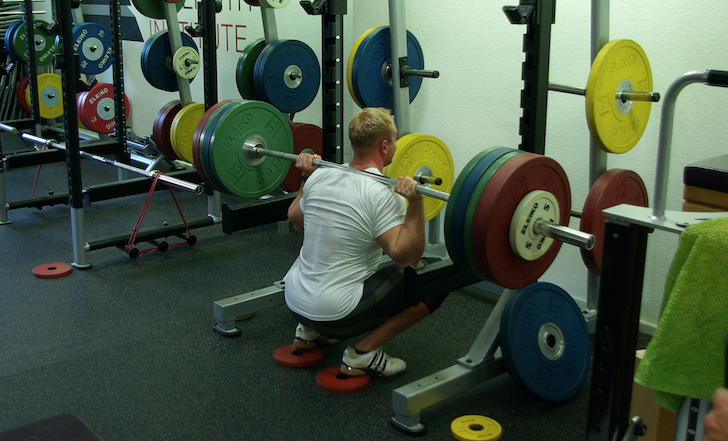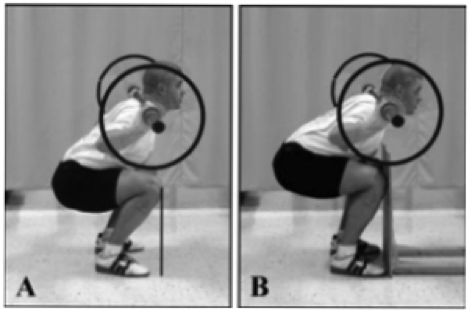"Ask the Coach" is the column in which Wolfgang Unsöld answers your questions. The book of the same name will be released on February 13, 2017. You can pre-order it right here on Amazon.
Question: A trainer in my studio recently corrected me with squats. He said I shouldn't put my knees in front of my toes. However, it feels right to me when I go all the way down. And in the squat pictures you post, the knees are always far in front of the toes. Can you justify the advantage so that next time I can tell the trainer why I'm doing it this way?
WU: It's mostly trainers who haven't understood the biomechanics and functional anatomy of the knee, or trainees who are often unable to do deep squats themselves due to a lack of mobility, who unfortunately still have the "It's harmful, the knee to tiptoe” myth. This is nonsense. On the one hand, it is a natural movement to bend the knee completely, every toddler does it before they can walk for the first time. On the other hand, you cannot go up or down a step in a normal way without pushing your knee in front of your toes. Test it yourself on the next step.
The knee joint is designed to be bent and extended.
A study on this topic that YPSI A license trainer and freelance author Philip Schmieder sent me some time ago comes from the University of Memphis, Tennessee. There, squats with the thighs parallel to the floor, in which the knee is pushed in front of the toes, were compared with squats, in which the advance of the knees was blocked by a wooden board (see picture):
As you can see, this is not a deep squat, as this is not possible if the knees are to remain behind the tips of the toes. But even with a parallel squat (thighs parallel to the floor), there were huge differences.
These were the results of the study:
As can be seen in the results, torque was slightly higher in the unlimited (the left) squat than in the limited squat. However, the torque in the hip joint was over 1000% greater in the limited squat than in the knee-over-toe squat.
What does that mean? Either the stress is on the knees or it is being placed on the lower back/spine by excessive leaning forward - which shifts the center of gravity forward to compensate for the backward thrust of the buttocks. Biomechanically, this is much less favorable than the somewhat greater load on the knees and a significantly worse position for the intervertebral discs.
In addition to the higher loads on the hips and back, a squat in which the knees remain behind the toes stretches the muscles in the hip and knee joints, primarily the quadriceps, hamstrings and buttocks, and does not train optimally over a full range of motion. Which is critical to improving and maintaining mobility, stability, and strength in the knees and hips.
A well-executed squat distributes the load across your knees and back. And the knees move as far in front of the toes as possible for optimal knee and hip extensor recruitment.
Good luck with optimizing knee position when squatting!
You can order the “Ask the Coach” book right here on Amazon.
If you have a question for the Ask the Coach column, post it in the comments below and with a little luck your question will be selected for an upcoming post or the next Ask the Coach book.
You can find more about squats, including a 10-phase program, in the YPSI Handbook – Improve your Squat
Image: Austrian sprinter & powerlifter Enno Vogel doing 160kg squats with heels elevated in the YPSI. And your knees well in front of your toes.



